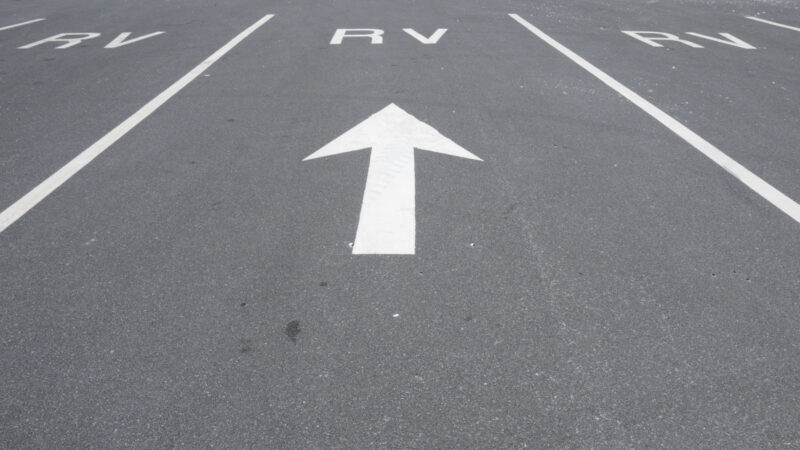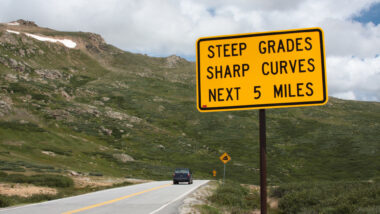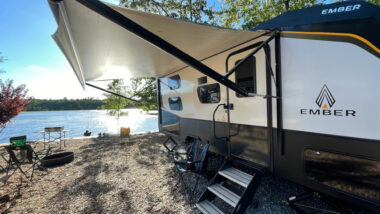Table of Contents Show
When looking at a campground map online, you’re probably looking for a site with adequate space for your size RV.
Or, perhaps, you’re looking for some shade if traveling during the warmer months and a convenient location to other amenities in the campground. Another important piece of information to note is whether or not the site is back-in or pull-through.
Your route to get there from the entrance may differ depending on the site type.
In addition, how you go about parking in back-in RV sites differs from how you go about parking in pull-through RV sites.
Let’s take a closer look!
What Are Back-In RV Sites?
The majority of campgrounds across the country offer back-in RV sites. These sites require travelers to pass by the campsite and then reverse back into it.
There is one way in and one way out. You may find that these sites are cheaper than pull-through RV sites.
That may be because they require a little more work to get into them.
What Are Pull-Through RV Sites?
On the other hand, pull-through RV sites require no backing in. You simply turn straight into your campsite and park. You may position your RV towards the front of the site or the back.
That depends on the location of the hookups or how many other vehicles you have with you. These sites are generally easier to get into as they’re just long parking spaces requiring no backing up.
There are two exits in a pull-through site.
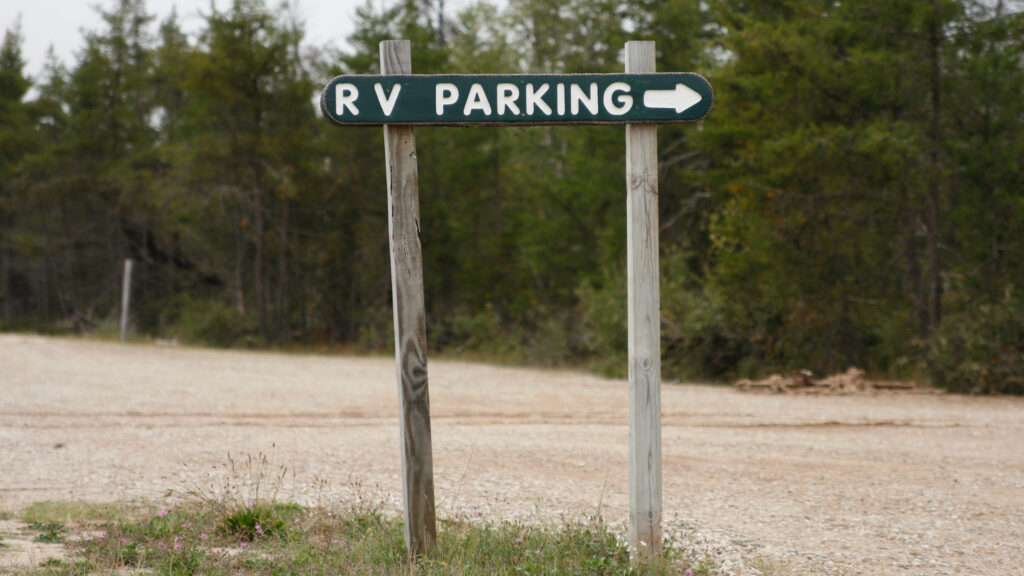
Pros of Back-In RV Sites
As mentioned above, sometimes back-in RV sites are cheaper. However, this isn’t always the case.
Note on the campground’s website or ask when you call if you can save a few bucks a night. Back-in sites are also more available.
Usually, pull-through sites are booked first, so if you want to save money and aren’t particular about how to enter the site, you have your pick of back-in sites scattered throughout the campground.
Cons of Back-In RV Sites
Your view is limited. There isn’t much room to move around when backing in because they’re generally shorter and smaller than pull-through RV sites and only have one entrance/exit.
You might have a great view on the driver’s side of the campsite, but since it’s a back-in site, there’s not much you can do.
Because these sites are generally shorter and smaller, they can be more difficult for big rigs to get into. A long fifth wheel may have to position its rear axle as close to the site’s back end as possible.
This may mean lots of overhang to avoid having the front cap too close to the campground road. If there’s a grade in the back of the site, the space becomes even more limiting because you can only back up so far until the rear of the RV touches the incline.
Depending on the campground roads’ layout, the back-in site’s width, and any obstructions like large rocks and overhanging tree limbs, getting into a back-in RV site can be challenging.
Knowing how far to pull forward and how and when to turn takes time to grasp. And when obstructions get in the way, it can be a stressful start to your camping weekend.
If you don’t have good communication with your partner or if you’re backing in as a solo traveler, it may take several attempts to get positioned straight in your RV site.
Pros of Pull-Through RV Sites
Choose a pull-through RV site if you’re looking for the easiest way to get parked at a campground. You may back up and move forward once you get into the site to reposition your rig.
However, you don’t have the same stressors you would have if you had to park when you back in.
You may never have to worry about driving in reverse, knowing how and when to turn to get into a site, or figuring out how much room is behind you if you always book a pull-through RV site.
They’re also generally larger than back-in sites. This is why you’ll see Class A motorhomes lined up when pull-through sites are available at a campground. The convenience of having a large space to easily pull into makes driving or towing a big rig that much easier.
For newer RVers, booking a pull-through site can reduce the stress of learning how to properly back into a campsite on the first or second camping trip.
Cons of Pull-Through RV Sites
The only major con of pull-through RV sites is the potential expense. Some campgrounds will charge more for these types of sites. You may be wasting your money if you have a smaller travel trailer and don’t need all that space.
Even if you have a larger RV, if you aren’t going to be at the campground except to sleep, you might feel like you’ve wasted money on a larger space that you won’t even use.
You might be out hiking, paddling, and shopping and not need all of the space a pull-through site provides during your stay.
If you’re not going to set out your outdoor furniture, park an additional car, or enjoy dinners at the picnic table, consider saving some money and getting a smaller back-in RV site.
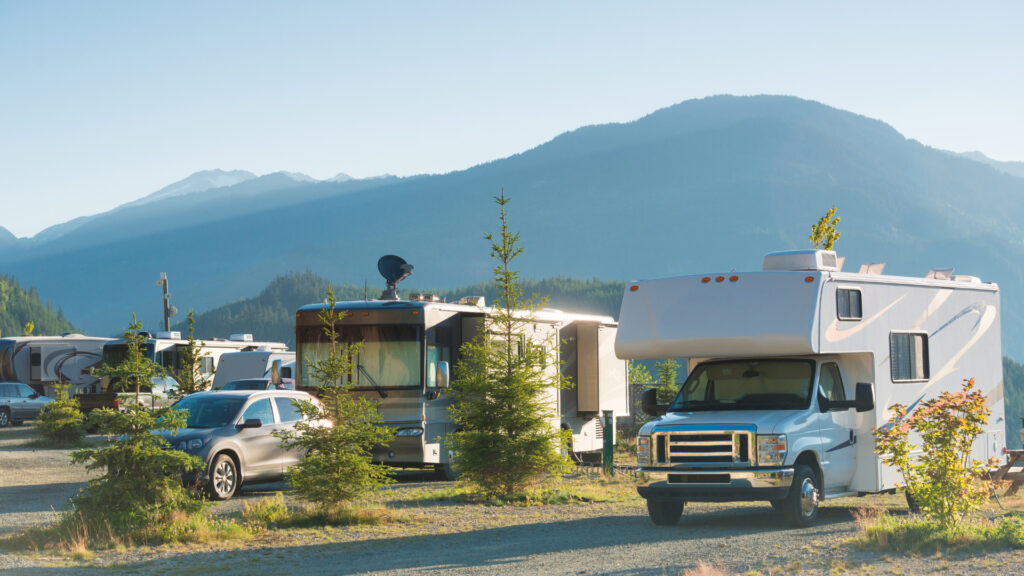
How to Park Your RV in a Back-In Site
One of the most important tips for backing into a campsite is to pull forward farther than you think you need to. No matter your RV size, you want to pull way past the entrance to your site before you start backing in.
If you have a second person traveling with you, it’s also important to know how you’ll communicate. Will you use walkie-talkies or cell phones? Will you use hand motions?
You can practice this together before you ever arrive at a campground. This setup process can be stressful, and you don’t want to start the trip off by yelling at each other.
When backing in, remember your turning radius. You’ll want to start turning before you think you need to. If you’re towing, you’ll also be turning the steering wheel in the opposite direction of what you would do if you weren’t towing.
This is important information to discuss with whoever is helping you back in. Your partner needs to know how to effectively tell you which way to turn since it’s backward.
Once you’ve gotten your wheels into the site, go back as far as you can and then pull forward to where you need to be to reach the hookups or to be on level ground.
Note any slopes or uneven spots on the site. This will matter when you start to level your RV.
How to Park Your RV in a Pull-Through Site
Parking in a pull-through RV site is much less complicated. Make sure your turn is wide, keeping in mind your turning radius.
Usually, this isn’t a problem as pull-through sites are generally wider than back-in sites. It’s like turning into an extra large parking space designed for RVs.
Just like you would when backing into a site, note any slopes or uneven spots in the site, so you don’t struggle to get your RV level.
If you need to back up after turning into the site, it’s much less stressful as you’ll only drive a few feet in reverse.
Many campgrounds design pull-through RV sites in between one-way roads. Typically, you enter from one road and you exit out another. This provides easy traffic flow and minimizes the risk of two large RVs trying to pass each other.
Tips When Choosing an RV Site
If you arrive at a first-come, first-served campground where RV sites aren’t assigned, you’ll be responsible for driving around and locating your site.
This means you’ll want to pay attention to a few key things to choose an RV site that fits your needs and will make your stay enjoyable.
Look How Level the Site Is
Always look at how level the site is, regardless of whether or not it’s a back-in or pull-through RV site. No matter how easy it is to get into the site, getting your rig level may be a chore.
Having a level RV is essential if you have a propane fridge or slide-outs. It’s also crucial to your overall comfort. So note any slopes front to back or side to side as you drive around.
Pro Tip: Level your RV like a pro with our tips and tricks to leveling your RV the right way.
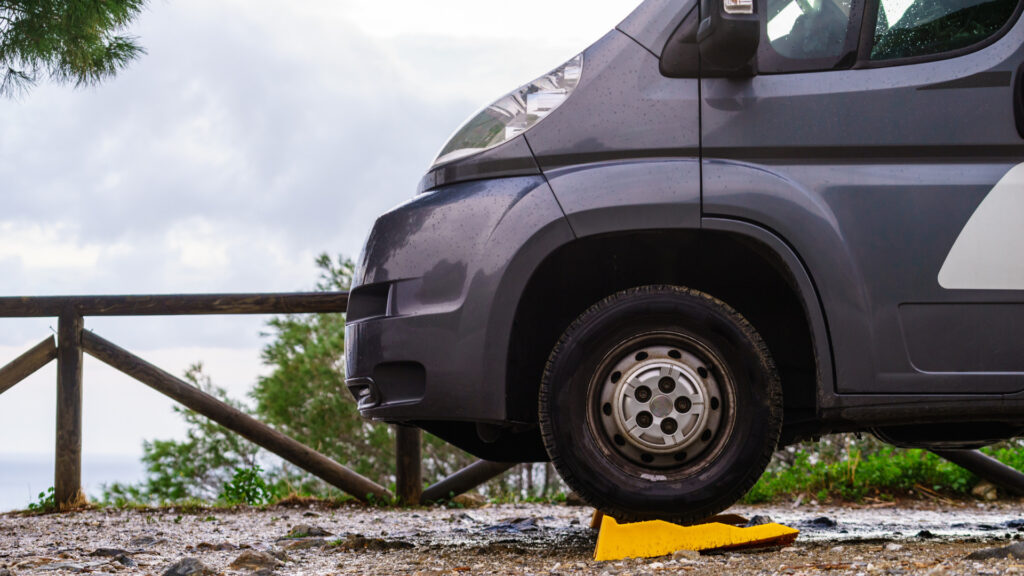
Check for Obstacles Before Backing In
Obstacles are a huge concern for RVers. Even pull-through sites may have overhanging limbs that could possibly damage your air conditioning unit. There may also be a neighboring parked car that will be in your way as you make your wide turn into the site.
When choosing your site, pay attention to the surroundings. Shade is great, but is there enough room for your RV to get underneath those limbs?
Campgrounds love to use huge rocks as natural decor, but these rocks may be huge obstructions when you need to make a tight turn to back into the site.
Another consideration is the slide-outs. Make sure the site is wide enough to get all of your slides pushed out without hitting the pedestal or a tree.
Finally, consider when you’ll leave. If an electrical pole won’t affect your ability to back in but might affect your ability to get out, you might want to skip that site.
Look Up
Like checking for obstacles, looking up is another tip when choosing a campsite. As mentioned before, trees are a concern, so ensure you can safely get in and out of the site without scraping your rig.
This is important for the person helping the driver back into the site. Don’t just look down the sides of the camper or pay attention to the dips and bumps in the site. Also, pay attention to what’s overhead.
This becomes even more important if you’re using Starlink as your internet. You need a clear line of sight to the sky for the service to function well.
So as you’re driving around looking for your perfect campsite, don’t forget to look up.
Keep in Mind: There are thousands of free options for RV parking, but you need to know how to find them. Take a look at our tips to finding Free RV Parking Anywhere!
Park Your RV Like a Pro No Matter What Type of Site
Some people have backed into hundreds of sites over the years. The stress may lessen, but it doesn’t go away. There always seem to be neighboring campers that gather around to watch the latest victim try to back into a narrow campsite.
This audience can add to your already-fried nerves. But as long as you stay focused and communicate well with your partner, you’ll be parking like a pro in no time.
If you can book a pull-through RV site as you’re beginning your camping trips, this might help with nerves.
Then once you’ve been able to practice in an empty parking lot a few times, you’ll be ready to tackle that first back in an RV site.
No matter which type of site you reserve, be patient. Check your surroundings and get a lay of the land.
Then, when you nail your parking job, grab a beverage and enjoy the beginning of your trip.
Where will you go next?




